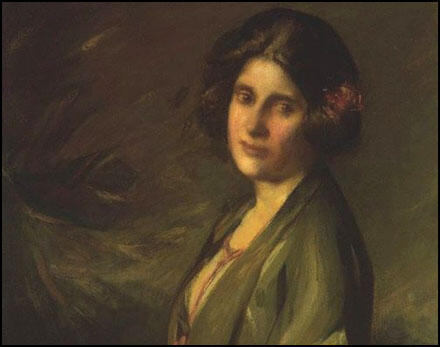On this day on 10th October
On this day in 1549 Edward Seymour, Duke of Somerset, is fired as Lord Protector & imprisoned. Somerset, was criticised by the way he had dealt with the Kett Rebellion. Seymour was blamed by the nobility and gentry for the social unrest. They believed his statements about political reform had encouraged rebellion. His reluctance to employ force and refusal to assume military leadership merely made matters worse. Seymour's critics also disliked his popularity with the common people and considered him to be a potential revolutionary. William Paget wrote to Somerset admitting that "there was never man that had the hearts of the poor as you have!" However, the way he had dealt with the uprising had given both occasion and boldness to strike. In doing so he had betrayed the governing class. He told him that he should concentrate his efforts on the "conservation and state of the realm." Paget then suggests that Somerset should bring an end to his programme of religious reform. Although the "old religion is forbidden by a law... the new religion is not yet printed in the stomachs of the eleven of twelve parts of the realm".
As he was such a popular figure the authorities feared that Somerset's execution would cause disorder. On the morning of 22nd January, 1552, people living in London were ordered to remain in their houses. For added protection, over a 1,000 soldiers were on the streets of the city. Despite these measures large crowds gathered at Tower Hill. (47) He showed no sign of fear and he told those assembled that he died in the knowledge that he was "glad of the furtherance and helping forward of the commonwealth of this realm". He also urged those present to follow the reformed religion that he had promoted. Edward VI wrote in his journal: "The Duke of Somerset had his head cut off upon Tower Hill between eight and nine in the morning."
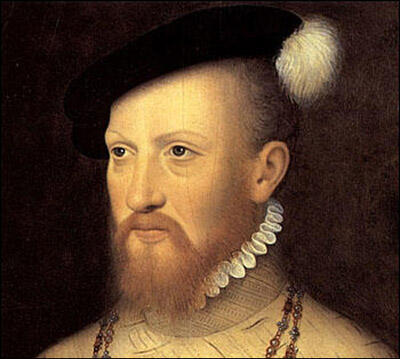
Edward Seymour
On this day in 1876 Clara Codd, the eldest of ten girls, was born in Bishop’s Tawton, near Barnstaple on 10th October 1876. Her father, Henry Frederick Codd, was an inspector of schools in Devon and Cornwall. On the death of her father in 1899, the family moved to Geneva.
Codd later wrote of how her experiences in Switzerland marked "the first time in life I came into contact with all sorts and conditions of men, and learned to be free and a friend of all that lives, instead of the proper, little caste-ridden Victorian that I was in the beginning." After working as a governess in Ireland, she returned home to Bath and became a member of the Social Democratic Federation. She also attended meetings of the Theosophical Society.
In 1907 she was asked by Aeta Lamb to become a steward of meeting being addressed by Christabel Pankhurst and Annie Kenney at a local Women's Social and Political Union (WSPU) meeting. The following year she became the honorary secretary of the newly founded Bath branch of the WSPU. Codd became a frequent visitor to Eagle House near Batheaston, the home of fellow WSPU member, Mary Blathwayt. Her father, Colonel Linley Blathwayt was sympathetic to the WSPU cause and he built a summer-house in the grounds of the estate that was called the "Suffragette Rest".
Members of the WSPU who endured hunger strikes went to stay at Eagle House. Mary Blathwayt recorded in her diary that Annie Kenney had intimate relationships with at least ten members of the WSPU at Batheaston. Blathwayt records in her diary that she slept with Annie in July 1908. Soon afterwards she illustrated jealousy with the comments that "Miss Browne is sleeping in Annie's room now." The diary suggests that Annie was sexually involved with Clara Codd. Blathwayt wrote on 7th September 1910 that "Miss Codd has come to stay, she is sleeping with Annie." Codd's autobiography, So Rich a Life (1951) confirms this account.
The historian, Martin Pugh, points out that "Mary writes matter-of-fact lines such as, Annie slept with someone else again last night, or There was someone else in Annie's bed this morning. But it is all done with no moral opprobrium for the act itself. In the diary Kenney appears frequently and with different women. Almost day by day Mary says she is sleeping with someone else."
Fran Abrams the author of Freedom's Cause: Lives of the Suffragettes (2003), has argued that Annie Kenney had a series of romantic attachments with other suffragettes: "The relationship (with Christabel Pankhurst) would be mirrored, though never matched in its intensity, by a number of later relationships between Annie and other suffragettes. The extent of their physical nature has never been revealed, but it is certain that in some sense these were romantic attachments. One historian who argues that Annie must have had sexual feelings for other women adds that lesbianism was barely recognised at the time."
Emily Blathwayt recorded in her diary about how Clara and Annie Kenney were attacked during a meeting in Bath. "Clara Codd was not allowed to speak but the chairman Annie said everything to the purpose as she always does and the reporters have put it all in. When the platform was about to be rushed they broke up the meeting and got some of the ladies into a smaller room where they spoke... Annie was begged to go out by the back, but she said she would not sneak out like a Cabinet Minister. The police with difficulty protected our poor man from Bence's with the fly and our four got off safely. We read Clara who walked was sadly hustled and the police got her party into the York House Mews."
On 13th October 1908 Clara Codd was arrested at a demonstration outside the House of Commons and sentenced to one month's imprisonment. Christabel Pankhurst suggested that Clara should become a full-time WSPU organiser working under Flora Drummond at a salary of £2 a week. However, she turned down the offer and after this seems to have left the WSPU.
Codd joined the Theosophical Society. In her autobiography, So Rich a Life (1951), Clara states, "I had come home at last after long wandering. I had found the beginning of the way." According to her biographer, Heloise Brown, "After a short period of employment as a teacher, she was offered work as a lecturer by the Theosophical Society, and soon spent two years at the society's headquarters in Adyar, India, as the result of a private bequest. She continued to lecture for the society throughout the 1910s, her wages being raised by the head of the movement, Annie Besant. Codd spent the remainder of her life as a travelling lecturer for the Theosophical Society, spending several years in the United States, New Zealand, Australia, where she was general secretary from 1935 to 1936."
During the Second World War she lived in South Africa. Her biographer claims that: "Codd was both unassuming and sincere; her ability to communicate directly across class and cultural barriers undoubtedly contributed to her international success as a lecturer. Her history of addressing working men and women in the socialist and suffrage movements had developed her skills as a public speaker, while her experiences as a young woman in the cosmopolitan circles of Geneva had encouraged her to be accomplished, informed, and, importantly, self-reliant."
Clara Codd, who never married, died at Heatherwood Hospital, Sunninghill, Berkshire, of heart failure on 3rd April 1971.
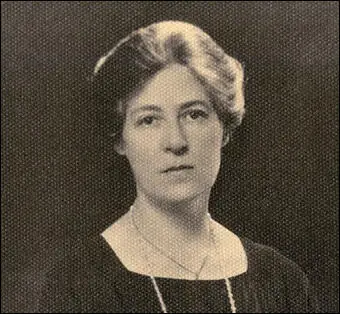
On this day in 1883 Adolph Joffe was born in Simferopol, Russia. In 1917 Joffe was elected to the Petrograd Soviet and the Bolshevik Central Committee. During the October Revolution Joffe was the chairman of the Military Revolutionary Committee. Leon Trotsky claimed that "Joffe was a man of great intellectual ardour, very genial in all his personal relations, and unswervingly loyal to the cause". When Trotsky took control of the Red Army during the Civil War, Joffe replaced him as Commissar for Foreign Affairs and carried out negotiations with Turkey and Germany. While in Berlin he was accused of planning a communist revolution and was expelled from the country.
Joffe was a loyal supporter of Leon Trotsky and after Joseph Stalin gained power was sent him abroad as a diplomatic. In 1927 Joffe was one of the few leading Bolsheviks who was willing to defend Trotsky. After the expulsion of Trotsky from the Central Committee, Joffe decided to commit suicide and sent Trotsky a letter: "One does not lie before his death, and now I repeat this again to you. But you have often abandoned your rightness for the sake of an overvalued agreement or compromise. This is a mistake. I repeat: politically you have always been right, and now more right than ever. Some day the party will realize it, and history will not fail to accord recognition. Then don't lose your courage if someone leaves you know, or if not as many come to you, and not as soon, as we all would like. You are right, but the guarantee of the victory of your rightness lies in nothing but the extreme unwillingness to yield, the strictest straightforwardness, the absolute rejection of all compromise; in this very thing lay the secret of Lenin's victories. Many a time I have wanted to tell you this, but only now have I brought myself to do so, as a last farewell."
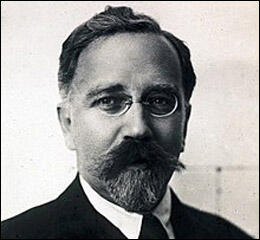
On this day in 1902 the murder trial of Tom Horn begins. In 1890 Horn joined the Pinkerton Detective Agency at Denver. Four years later he became a detective with the Swan Land and Cattle Company. During this period it appears he became an hired assassin. He later admitted to a friend that he murdered William Lewis (August, 1895) and Fred Powell (September, 1895) for $1,200. Horn also approached William K. Meade, the marshal of Tucson, and offered to kill members of the Christian gang. It is not known whether Meade commissioned Horn to do this but Jack Christian and Robert Christian were both murdered in 1897. On 19th July, 1901, a 13 year old boy, William Nickell, was killed by a sniper in the Iron Mountain region. The murder took place in bad light and Marshal John LeFors became convinced that he had been mistaken for his father, Kels Nickell. LeFors interviewed Horn about the death of Nickell. He admitted he had been employed to stop rustlers stealing cattle in Montana and that he had killed Nickell by mistake. During his trial Horn claimed he had been drunk when he was interviewed by LeFors and had lied about the killing of William Nickel. The jury decided that Tom Horn had killed Nickel and he was hanged on 20th November, 1903.
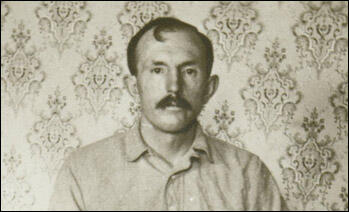
On this day in 1903 the Women's Social and Political Union was formed by Emmeline Pankhurst. Some early members included Christabel Pankhurst, Sylvia Pankhurst, Adela Pankhurst, Emmeline Pethick-Lawrence, Marion Wallace-Dunlop, Elizabeth Robins, Flora Drummond, Annie Kenney, Mary Gawthorpe, May Billinghurst, Elizabeth Wolstenholme-Elmy, Mary Allen, Winifred Batho, Mary Leigh, Mary Richardson, Ethel Smyth, Teresa Billington-Greig, Helen Crawfurd, Emily Davison, Charlotte Despard, Mary Clarke, Margaret Haig Thomas, Cicely Hamilton, Eveline Haverfield, Edith How-Martyn, Constance Lytton, Kitty Marion, Dora Marsden, Hannah Mitchell, Margaret Nevinson, Evelyn Sharp, Nellie Martel, Helen Fraser, Minnie Baldock and Octavia Wilberforce. The main objective was to gain, not universal suffrage, the vote for all women and men over a certain age, but votes for women, “on the same basis as men.” This meant winning the vote not for all women but for only the small stratum of women who could meet the property qualification. As one critic suggested, it was "not votes for women", but “votes for ladies.”
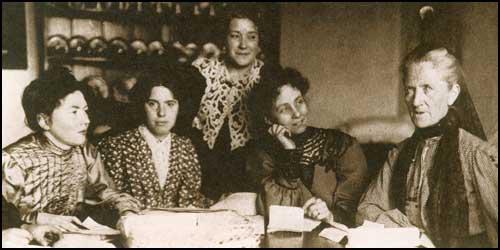
Nellie Martel, Emmeline Pankhurst and Charlotte Despard.
On this day in 1911 Robert Borden becomes the 8th Prime Minister of Canada. Borden, who was knighted in 1914, gave his full support to the Allies throughout the First World War and sent almost half a million volunteers to fight in Europe. In 1917 Borden represented Canada in the Imperial War Cabinet. Borden also attended the Versailles Peace Conference where he argued that British dominions should be treated as equal partners with Britain in international affairs. An active supporter of the League of Nations, Borden served on its council in 1930. Sir Robert Borden died in 1937.
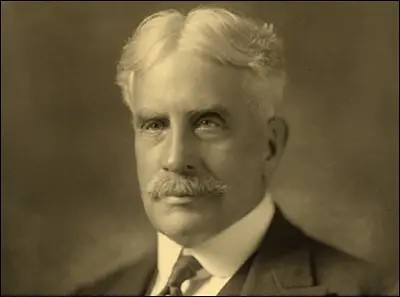
On this day in 1912 the last edition of the The Freewoman is published. Dora Marsden told her readers: "The editorial work has not been easy. We have been hemmed in on every side by lack of funds. We have, moreover, been promoting a constructive creed, which had not only to be erected as we went along, we had also to deal with the controversy which this constructive creed left in its wake.... The entire campaign has been carried on indeed only at the cost of a total expenditure of energy, and we, therefore, do not hold it possible to continue the same amount of work, with diminished resources, if in addition, we have to bear the entire anxiety of securing such resources as are to be at our disposal."
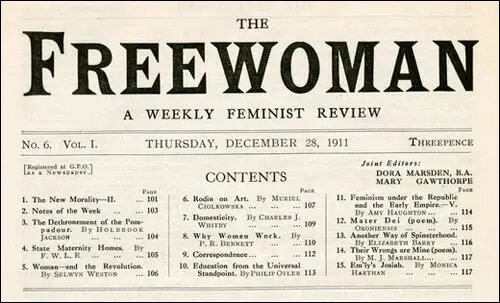
On this day in 1954 Ho Chi Minh enters Hanoi after withdrawal of French troops. In September, 1945, Ho Chi Minh announced the formation of the Democratic Republic of Vietnam. Unknown to the Vietminh, Franklin D. Roosevelt, Winston Churchill and Joseph Stalin had already decided what would happen to post-war Vietnam at a summit-meeting at Potsdam. It had been agreed that the country would be divided into two, the northern half under the control of the Chinese and the southern half under the British.
After the Second World War France attempted to re-establish control over Vietnam. In January 1946, Britain agreed to remove her troops and later that year, China left Vietnam in exchange for a promise from France that she would give up her rights to territory in China. France refused to recognise the Democratic Republic of Vietnam that had been declared by Ho Chi Minh and fighting soon broke out between the Vietminh and the French troops. At first, the Vietminh under General Vo Nguyen Giap, had great difficulty in coping with the better trained and equipped French forces. The situation improved in 1949 after Mao Zedong and his communist army defeated Chaing Kai-Shek in China. The Vietminh now had a safe-base where they could take their wounded and train new soldiers.
By 1953 the Vietminh controlled large areas of North Vietnam. The French, however, had a firm hold on the south and had installed Bo Dai, the former Vietnamese Emperor, as the Chief of State. When it became clear that France was becoming involved in a long-drawn out war, the French government tried to negotiate a deal with the Vietminh. They offered to help set-up a national government and promised they would eventually grant Vietnam its independence. Ho Chi Minh and the other leaders of the Vietminh did not trust the word of the French and continued the war.
French public opinion continued to move against the war. There were four main reasons for this: (1) Between 1946 and 1952 90,000 French troops had been killed, wounded or captured; (2) France was attempting to build up her economy after the devastation of the Second World War. The cost of the war had so far been twice what they had received from the United States under the Marshall Plan; (3) The war had lasted seven years and there was still no sign of an outright French victory; (4) A growing number of people in France had reached the conclusion that their country did not have any moral justification for being in Vietnam.
General Navarre, the French commander in Vietnam, realised that time was running out and that he needed to obtain a quick victory over the Vietminh. He was convinced that if he could manoeuvre General Vo Nguyen Giap into engaging in a large scale battle, France was bound to win. In December, 1953, General Navarre setup a defensive complex at Dien Bien Phu, which would block the route of the Vietminh forces trying to return to camps in neighbouring Laos. Navarre surmised that in an attempt to reestablish the route to Laos, General Giap would be forced to organise a mass-attack on the French forces at Dien Bien Phu.
Navarre's plan worked and General Giap took up the French challenge. However, instead of making a massive frontal assault, Giap choose to surround Dien Bien Phu and ordered his men to dig a trench that encircled the French troops. From the outer trench, other trenches and tunnels were dug inwards towards the centre. The Vietminh were now able to move in close on the French troops defending Dien Bien Phu. While these preparations were going on, Giap brought up members of the Vietminh from all over Vietnam. By the time the battle was ready to start, Giap had 70,000 soldiers surrounding Dien Bien Phu, five times the number of French troops enclosed within.
Employing recently obtained anti-aircraft guns and howitzers from China, Giap was able to restrict severely the ability of the French to supply their forces in Dien Bien Phu. When Navarre realised that he was trapped, he appealed for help. The United States was approached and some advisers suggested the use of tactical nuclear weapons against the Vietminh. Another suggestion was that conventional air-raids would be enough to scatter Giap's troops.
The United States President, Dwight Eisenhower, however, refused to intervene unless he could persuade Britain and his other western allies to participate. Winston Churchill, the British Prime Minister, declined claiming that he wanted to wait for the outcome of the peace negotiations taking place in Geneva before becoming involved in escalating the war.
On March 13, 1954, Vo Nguyen Giap launched his offensive. For fifty-six days the Vietminh pushed the French forces back until they only occupied a small area of Dien Bien Phu. Colonel Piroth, the artillery commander, blamed himself for the tactics that had been employed and after telling his fellow officers that he had been "completely dishonoured" committed suicide by pulling the safety pin out of a grenade.
The French surrendered on May 7th. French casualties totalled over 7,000 and a further 11,000 soldiers were taken prisoner. The following day the French government announced that it intended to withdraw from Vietnam. The following month the foreign ministers of the United States, the Soviet Union, Britain and France decided to meet in Geneva to see if they could bring about a peaceful solution to the conflicts in Korea and Vietnam.
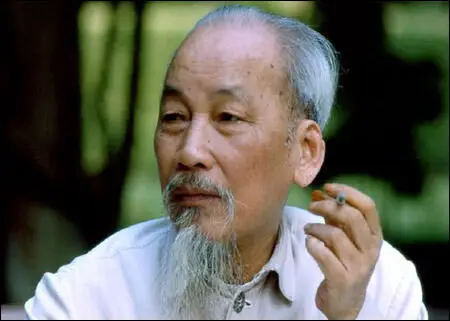
On this day in 1967 Inez Bensusan died.
Inez Bensusan, the daughter of mining agent, Samuel Levy Bensusan, was born in Sydney, into a wealthy Jewish family, on 11th September, 1871. She worked as an actress in Australia before moving to London in about 1893 where she became involved in the struggle for women's suffrage.
Bensusan became a member of the Women's Social and Political Union and in 1908 she joined with Elizabeth Robins, Kitty Marion, Winifred Mayo, Sime Seruya, Edith Craig, Ellen Terry, Lillah McCarthy, Sybil Thorndike, Lena Ashwell, Lily Langtry and Nina Boucicault to establish the Actresses' Franchise League.
The first meeting of the AFL took place at the Criterion Restaurant at Piccadilly Circus. The AFL was open to anyone involved in the theatrical profession and its aim was to work for women's enfranchisement by educational methods, selling suffrage literature and staging propaganda plays. The AFL neither supported nor condemned militancy.
Inez Bensusan oversaw the writing, collection and publication of Actresses' Franchise League plays. Pro-suffragette plays written by members of the Women Writers Suffrage League and performed by the Actresses' Franchise League included How the Vote was Won and A Pageant of Great Women (Cicely Hamilton) and Votes for Women (Elizabeth Robins).
Bensusan's first play, The Apple, was performed as part of a weekend protest organised by the WSPU against the Census in April 1911. The following year Bensusan wrote The Womanhood, in which she played the principal character. Bensusan was also the author of Nobody's Sweetheart (1911) and the suffrage film True Womanhood.
Bensusan helped form the Jewish League for Woman Suffrage in 1912. She joined the executive committee of the organisation whose main objective was "to demand the Parliamentary Franchise for women, on the same terms as it is, or may be, granted to men." One member wrote that "it was felt by a great number that a Jewish League should be formed to unite Jewish Suffragists of all shades of opinions, and that many would join a Jewish League where, otherwise, they would hesitate to join a purely political society."
In December 1913 she established the Women's Theatre Company, at the Coronet Theatre. The main objective of the organization was "to widen the sphere of propaganda still further by establishing a permanent season for the presentation of dramatic works dealing with the Women's Movement." According to Elizabeth Crawford, the author of The Suffragette Movement (1999): "It's first, and only, season was a success; its second was pre-empted by the outbreak of war."
During the First World War she took the Women's Theatre Company overseas to entertain the troops. She also appeared in two films, The Grit of a Jew (1917) and Adam Bede (1918). She stayed there for three and half years, appearing in fifty plays for the British Rhine Army Dramatic Company at the Deutsches Theatre, Bismarckstrasse.
Bensusan continued to act and had a major success in The Matriarch by Gladys Bronwyn Stern, which ran at the Royalty Theatre for 229 performances in 1929 and toured America in 1930. The play centers around two characters, the matriarch Anastasia and her granddaughter, Toni.
Bensusan also remained actively involved with the Actresses' Franchise League. After the war she co-founded the House of Arts in Chiswick to encourage local theatre, music, and art and appeared in a House of Arts drama circle triple bill in Chiswick Town Hall in 1951.
Inez Bensusan died at 49 Eaton Road, Sutton, Surrey, on 10th October 1967.
